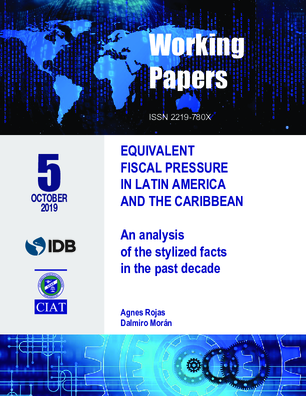Equivalent Fiscal Pressure in Latin America and the Caribbean: An Analysis of the Stylized Facts in the Past Decade
Date
Oct 2019
Data
The Equivalent Fiscal Pressure (EFP) of Latin America and the Caribbean for the period 1990-2018, using the IDB-CIAT calculation methodology, measures the total resources collected by the countries of the region, including compulsory contributions to private (actuarial) social security systems and non-tax revenues derived from the exploitation of natural resources. EFP amounted to 25.2 percent of GDP in 2018, an increase of 0.4 percent over 2017. The sustained increase rests on the three fiscal pillars: value added tax (VAT), the income tax system, and compulsory contributions to both public and private social security systems. From 1990 to 2018, the fiscal pillars of VAT, income tax, and compulsory public and private social security contributions grew jointly by 3.4 percentage points of GDP (87 percent), and by 2.7 points of GDP (77.5 percent), 1.6 points of GDP (59.5 percent) and 0.7 points of GDP (317.5 percent), respectively. In the period 2013-2018, EFP grew by only 1 percentage point of GDP, equivalent to an increase of 4.1 percent. VAT and income tax grew by only 4.8 percent (7.3 percent of GDP in 2018) and 11.8 percent (6.3 percent of GDP), while revenues from natural resources declined by 51.9 percent (1 percent of GDP).




